Review by Chris Rennirt
 WARNING: This review contains contains plot information necessary for the discussion and justification of opinions.
WARNING: This review contains contains plot information necessary for the discussion and justification of opinions.
If I’m lucky, after watching a movie for free, I am relieved of more than spending my own money on it; If lucky, I’m also spared the act of wasting time and witnessing other people waste theirs as well–wasting it to make a movie that fails at almost everything it should achieve easily. RAVAGE (originally titled Swing Low) is just such an example of one that gives me relief only in not wasting money to see it. Believe it or not, even I Spit on Your Grave (1978) is a better movie than Ravage. I Spit on Your Grave at least achieves it’s goal of being a most notorious “Video Nasty,” exploitation shocker, and outstanding example of revenge. Ravage achieves not even that. Like a half-digested piece of food, belched after a bad meal, Ravage remains with you just long enough to taste its bitterness, dislike it, and forget it. (And, believe it or not, that analogy actually relates to Ravage, both figuratively and literally.)
Why does Ravage fail at the only goal it could have, winding up like a bout of indigestion too? First, let’s look at what it’s all about. While alone in a remote area of wilderness in Virginia, an experienced nature photographer (Annabelle Dexter-Jones) witnesses a horrible crime. After photographing it, she attempts to escape and is captured by the offending rednecks. From there, she uses her survivalist skills trying to escape and make it out alive. Of course, we know that won’t be easy. This is a horror film, and worse yet, one I call real-world horror–the type that can and sometimes does happen in the real world.
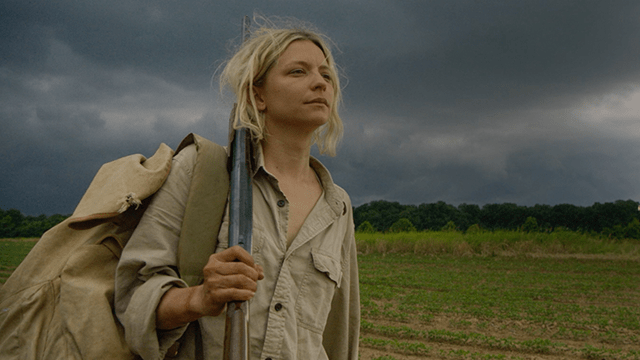
Annabelle Dexter-Jones (as Harper) in Ravage
Great set up for hillbilly horror, you think? The locals capture a beautiful, young girl and terrorize her, before she escapes and hunts them all down in a flaming wrath of bitch-fire revenge? “Sure sounds like another I Spit on Your Grave to me,” you say. Not so fast, I insist again!
Ravage could only be successful as a run of the mill, if not great, R-rated survival story, and/or as an infamously-great, albeit recycled sample of sleaze, exploitation, and misogyny; one in which women are portrayed as vulnerable to the ravages of men, ending in much-anticipated, extreme justice implemented by the victim turned badass. Don’t get me wrong. I’m not applauding sleaze, exploitation and misogyny–absolutely not. I’m only saying that those anti-qualities in movies have value to some, and producers, writers, and directors the world over take full advantage of it every day. At least such films, when successful, serve not just as a means of profit in a free, capitalist society, but also as a testament of who and what we are as a species–what motivates us for profit as filmmakers, as well as what motivates us as film watchers. But, again, Ravage is not enough of any of that to be of any value; it even fails miserably as worthwhile example of what it attempts. What’s left in the end is little more than a lingering WTF moment, before it’s all “belched” and forgotten.
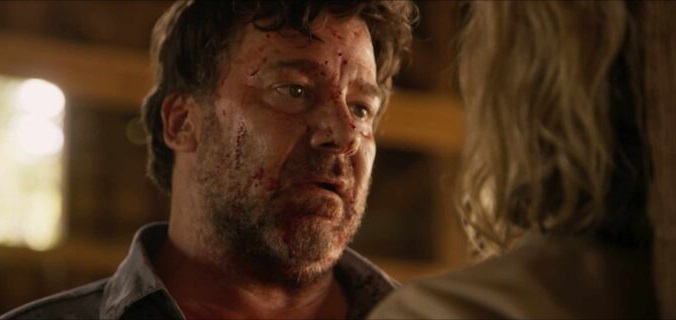
Robert Longstreet (as the redneck leader Ravener) in Ravage
What goes wrong? A lot! First of all, Ravage is a film that quickly establishes itself as a simple attempt at exploitation and misogyny, and then wimps out in key areas. It isn’t brutal enough to make us feel that anything so brutal really happened. Worse yet, after the protagonist is gang raped (in a scene that is only suggested), Harper emerges from it without even a hint of being affected, physically or emotionally. Glimpses of implied violence, along with a woman seemingly unaffected, don’t make us feel the horror. Instead, it creates yet another WTF moment. Instead, it’s an insult to women that is greater than what some would claim with the presence of such a rape scene or one more graphic. Harper, being portrayed as a resilient, tough-girl survivor elevates her above exploitation fodder; but, having her act as if it never happened further minimizes the rape as well as the motive we can feel for her revenge; the empathy we should feel for her. Instead, Ravage chugs right on, as if nothing so severe has happened. How easy it would have been to emphasize the horror of Harper’s rape by at least showing her emotions and pain afterward, if not showing more details of the assault. Harper is a woman clearly not accustomed to such experiences, and her trauma is ignored. Here, we have a movie attempting real-world horror, with horror that isn’t made real at all.
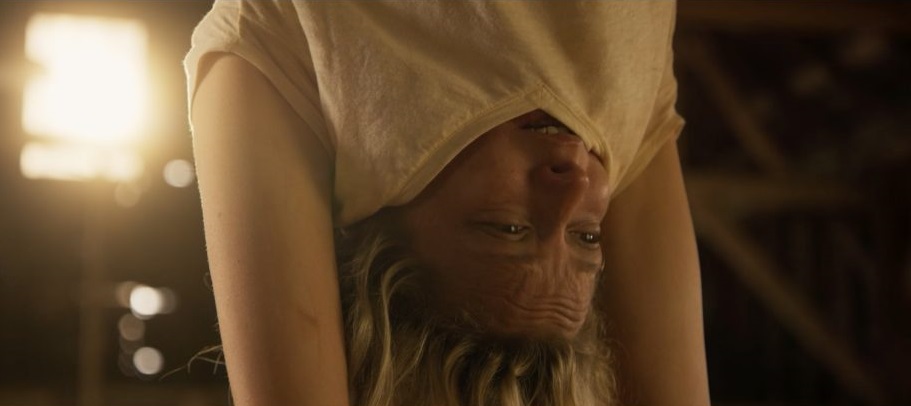
An extra rocket goes to Annabelle Dexter-Jones for her skills hanging upside down.
In the end, what is all worth? “Not much,” I say. Perhaps the best part about it is the beginning, before its shortcomings (more like massive voids) are evident. Early on, as Harper witnesses the horror, photographs it and runs, there is real dread and danger. When she is captured, the same dread and sense of danger is heightened even more. Thereafter, it’s all downhill. What’s left is a paint-by-numbers, hunt-her-down again movie, complete with cliched, dramatic yet unrealistic death scenes. By now, there’s just too much nonreality going on.
“Whoever was in charge of continuity in Ravage deserves credit for keeping watch on the feet.”
As for the movie’s best parts, we have the great performances of Annabelle Dexter-Jones and Bruce Dern. Dexter-Jones is actually such a talented actress that I would like to see her in other, more promising films she’s appeared in (and she has quite a list on IMDb). Bruce Dern appears as Mallincrkrodt (an old man whose identity I will not reveal), living in opulence in an antebellum mansion in the middle of nowhere. Although he adds to the film, his role seems more tacked on than planned. It’s as if Bruce Dern became available, unexpectedly, and was written in hastily for the credits. Aside from his standout performance, his character is completely unimportant. (When I think of Bruce Dern, I will forever remember classics like Silent Running–and anything but Ravage.) While other characters exist in the movie, they are mostly not developed even for their purposes. The redneck in charge, Ravener (Robert Longstreet), while doing his best as an arch villain and sadistic killer, is also helpless in overcoming the movie’s vapid script. It is only with the performance of Annabelle Dexter-Jones, Dern, and Longstreet that Ravage has fuel enough for three rockets so far at SJR–one rocket for each!

Bruce Dern (as Mallincrkrodt) in a role that is welcome but unimportant to the movie’s plot
There is one thing that Ravage does right that many movies with larger budgets do wrong. When Harper escapes and is on the run, through the countryside, through the woods and sticks, over rocks, etc., she is barefoot. She stays barefoot for considerable time, until she finds shoes in a place where it is logical to find them. In many larger-budget movies, the heroine, victim or whoever (and yes, it’s usually a female), after beginning barefoot, would have shoes on her feet, magically, from one cut to the next. I know they don’t want the actor to be uncomfortable, and they think no one is watching the feet; but, it is more obvious than they think, and I always notice it. One error like this I think of–and one from a large-budget film–is in Romancing the Stone, staring Kathleen Turner and Michael Douglas. In that, Turner suddenly goes from barefoot to fully shod in seconds…and here I digress. Anyway, whoever was in charge of continuity in Ravage deserves credit for keeping watch on the feet. And here, Annabelle Dexter-Jones earns another half rocket for being a barefoot trooper–staying shoeless in the face (or sole) of outdoor, terrestrial adversity–and keeping it real!
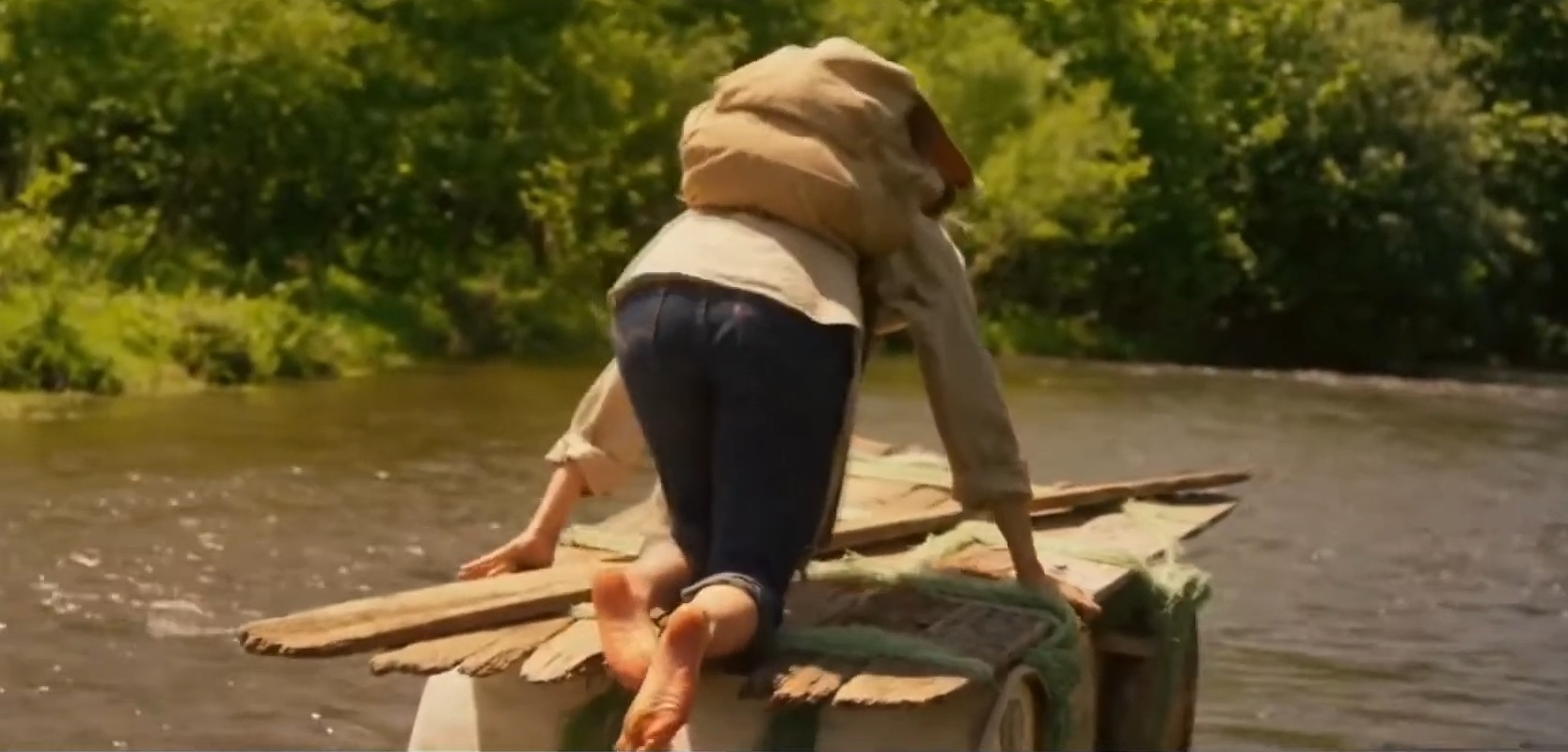
Annabelle Dexter-Jones stays barefoot to keep continuity in Ravage!
And the ending? Holy cow! Without adding another spoiler, let’s just say that it left me scratching my head for believability, yet again. In theory (gastrologically and according to legend), I guess it could work; but it just doesn’t add up, especially considering events in the movie earlier. So here, I must quote our commander in chief, Joe Biden: “Come on man! Gimme a break!” And yes! This review is loaded with inside jokes and clues, for those who’ve seen the movie. If you’re saying WTF, consider yourself lucky.
If revenge horror is your thing, and you’re looking for more, there are much better movies. One such alternative is efficiently titled Revenge (2017), staring Matilda Anna Ingrid Lutz, directed by Coralie Fargeat. Unlike Ravage, Revenge stays on task, with bold, real-world horror undiminished, followed with paybacks that satisfy. And for the cherry on top, Matilda stays barefoot too!
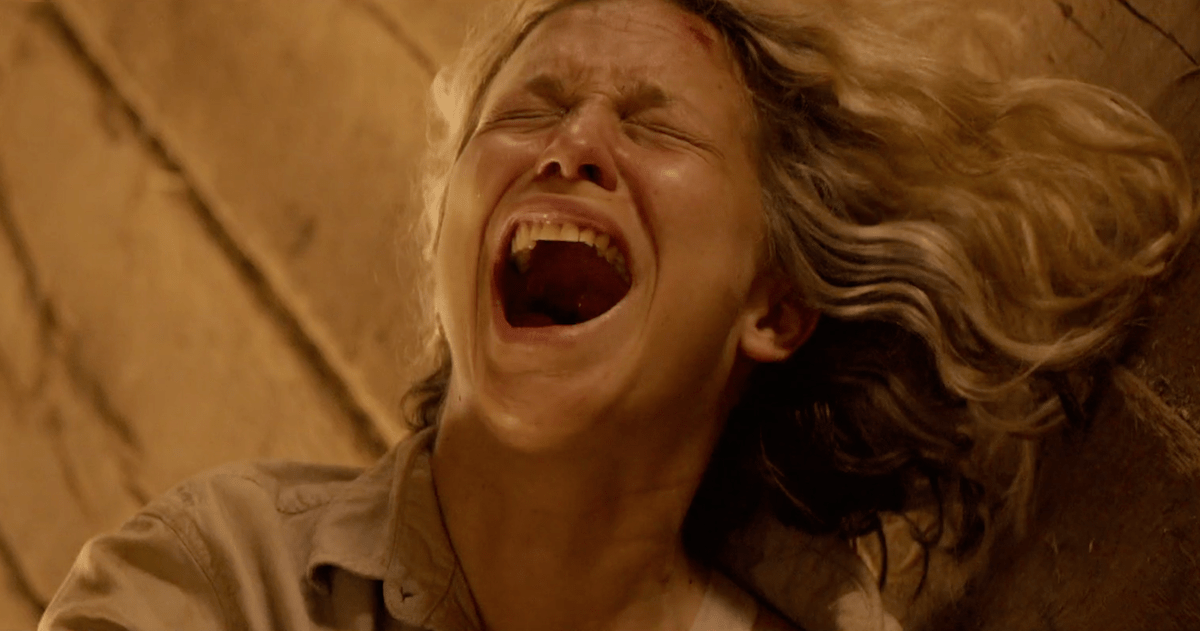
Harper (Annabelle Dexter-Jones) has many reasons for revenge in Ravage.
What is the definition of ravage? According to the Google dictionary, it’s “the severely damaging or destructive effects of something.” Here such damaging effects are mostly inflicted on the mood of those who watch the movie called Ravage. As a waste of time, talent, and someone’s money (hopefully not yours paying to see it), it fails at anything it could have achieved. It minimizes the trauma of rape for women, glossing over its affect as more routine and forgettable than horrific and indelible. Worst at all is that it failed, seemingly, at almost everything. Perhaps, if anything, Ravage succeeds in being a failure. So, as an oxy-moronic “successful failure,” I say “Bravo,” as I clap my hands most insincerely. And don’t let the trailer fool you!

Rocket Rating – 3.5
Chris Rennirt (the author of this review) is a movie critic and writer in Louisville, Kentucky, as well as editor in chief at Space Jockey Reviews. He has been a judge at many film festivals, including Macabre Faire Film Festival and Crimson Screen Film Fest, and he attends horror and sci-fi conventions often. Chris’ movie reviews, articles, and interviews are published regularly on Space Jockey Reviews and in Effective Magazine. His mission statement (describing his goals as a movie critic and philosophy for review writing) can be found on the “Mission” page, here at SJR. For more information about Chris Rennirt (including contact details, publicity photos, and more), click here.
You may also like these!









